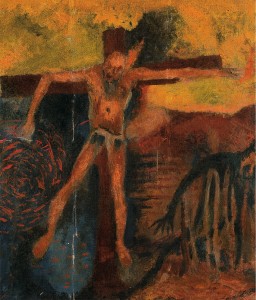Art does not save communal culture. It does not help languages that have appeared on its surface to survive. Instead, art exposes them, makes them transparent and defenseless, and strips them of their alibis by mocking their plans to live on. The texts of these languages strive to fill up the cultural space, but art, on the contrary, speaks of the void concealed within this space. Art does not create outward appearances; instead, it speaks about the appearance of the formerly concealed, about distrust and that which is hidden and peeks out through the darkness of outward appearances.
Above all, art notifies everyday conventionality of the fact that its outward appearance has boundaries and that there is a limit to the power of outward appearance, a limit to its self-sufficiency and autonomy. A piece of art marks the boundary of any manifestation; it offers but one of an infinite number of viewpoints and leaves behind it only one of many portrayals of the world. Art informs us that there is no longer any fortuity, that there is nothing “innate” or “natural”, and that choice does not exist either. Art compels outward appearance to admit that it is the realization of a conception, and the manifestation of meaning. But a painting replaces the outward appearance. It does not replicate the outward appearance; it calls it into question. A piece of art interrupts the constant flow of our perception of everyday reality.
An infinite number of forms introduce the meanings of “art” into everyday conventionality. These meanings do away with the imperceptible transience of everyday culture and do not allow it to fully occur. That is, they keep culture from merely existing. From this point on the present does not have time to occur; it can neither be born nor die. All time is postponed for later, and the present exists as an eternal projection, never materialized and never completed.
A painting abolishes life’s status as a given thing and brings it to the boundaries of something else. At this point and on this plane reality comes to a standstill and shatters into pieces, like an instantaneously frozen waterfall. Reality cannot remain itself when it tries to portray the fixed point of the present state, or rather the state of the present, by tearing it out of nonexistence between past and future.
On June 3, 1924, Clement Redko wrote in his diary, “What is ahead is always an apparition. This is what we learn from the past. The present does not exist. This conclusion is horrifying, but it is determinative in relation to everything that is done apart from my will.” [16] Whatever happens apart from the artist’s will always become the object of especially minute consideration.



